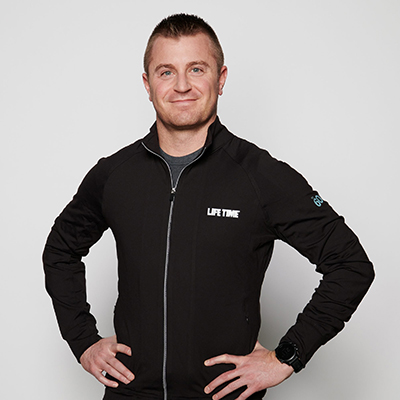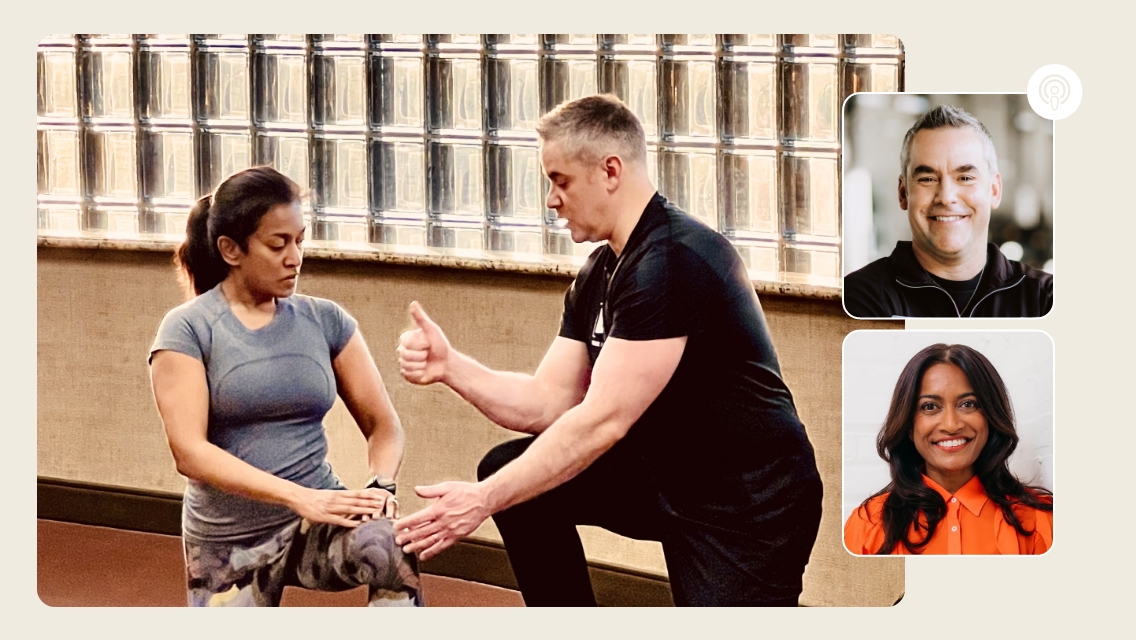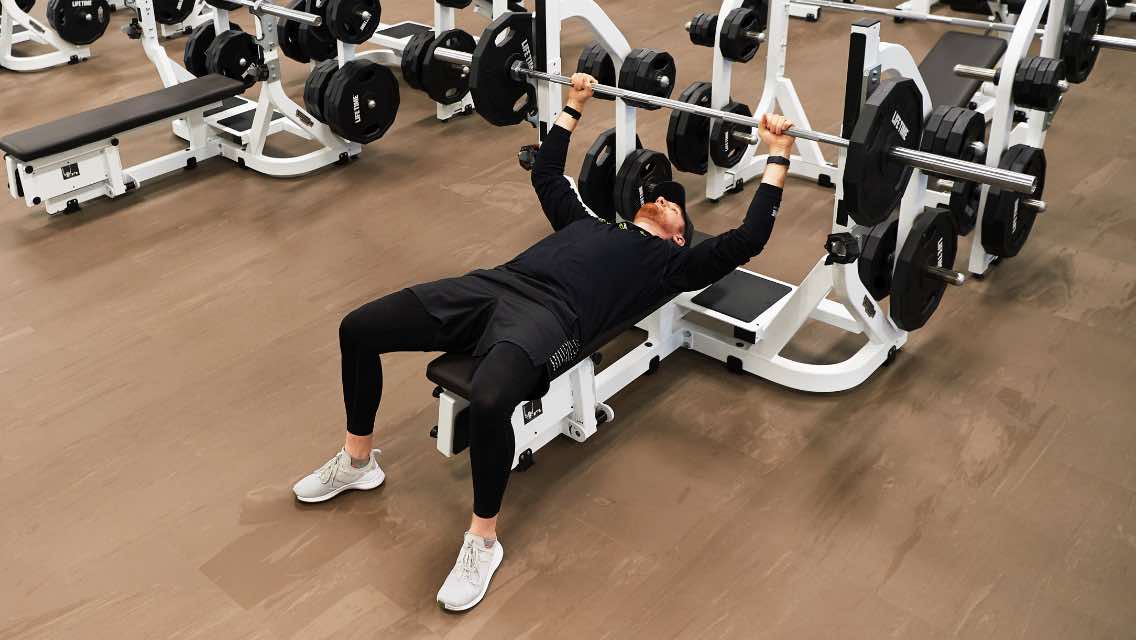In 2008, I transitioned from my job as a clinical dietitian to begin work in the fitness industry. After a few years of trying to teach hospital patients how to better manage their chronic diseases or conditions through improved nutrition, I was ready to take a more active role in changing the lives of a larger population of people — including those who who truly wanted change, not just those whose hospital rooms I was sent to.
So, I added Certified Personal Trainer to my Registered Dietitian credential, and took a job training clients at Life Time in Plymouth, Minn.
What was once a “job” has turned into an incredibly rewarding career. But I now realize at the time I really had no idea what I was getting into.
At first, I thought people hired personal trainers to get their butts kicked, learn how to use the fanciest equipment, or gain accountability to complete their workouts. That’s what trainers on TV do after all, right? I envisioned personal trainers as people who designed kick-ass workouts to push their clients’ boundaries, often taking pride in making people so sore they can’t do so much as sit.
I thought I’d be good at any one of those things, but I totally sucked at “selling” my services. I’m a pretty smart guy, can hold a decent conversation, and truly believe I can make a major difference in just about anyone’s fitness journey, but I had a tough time getting people to sign up with me for said “kick-ass” workouts.
After a few tough months of struggling, I realized my problem was that Life Time members wanted more than what a typical personal trainer provides. And quite frankly, the fitness industry also needs more than what the average personal trainer offers.
People don’t need personal trainers. They need fitness professionals.
While the most common term in the fitness industry for exercise experts is “personal trainer,” at Life Time we tend to refer to our certified and experienced training experts as “fitness professionals.” How can you tell the difference? Think about these three top traits fitness professionals display that differ from many personal trainers.
Personal trainers exercise muscles. Fitness professionals train people.
Whether you’ve seen it on TV or in person, you’ve probably witnessed a trainer who puts one client after another through the same exact brutal “flavor of-the-day” workout. How that counts as “personal” training, I’ll never know.
Trainers who operate with this somewhat simplistic philosophy can occasionally turn out stellar client results. However, they can also produce clients with injuries, illness, or flat-out disdain toward exercise. These are the stories no one in the fitness industry wants you to hear.
The clients left standing after training like heck may have the physiques and fitness their peers envy, but what about those who didn’t want to go about their exercise efforts in an unhealthy way?
Hopefully they find a fitness professional to work with.
While every effective fitness program needs to be based on sound foundational principles of physiological stress and adaptation, a fitness professional understands that most clients who come to them don’t have the baseline physiological health required to withstand the training program typical trainers have in mind. The right program for you needs to be based on a thorough assessment of your health.
The best program for you also ought to incorporate frequent, personalized modifications informed by analysis (and re-analysis) of objective and subjective data. True fitness professionals are adamant about capturing and revisiting data to inform decisions at critical points as they carry out each clients’ program.
Fitness professionals understand that training a person to achieve lifelong health, fitness, or physique benefits takes a comprehensive, dynamic approach administered with an open mind and a unique set of checks and balances for each individual. Properly training someone requires the trainer to have a total understanding of who each client is as a person, what makes them tick, and how they feel every step of the journey — especially between workouts.
I personally wouldn’t hire someone to guide my training program who didn’t at a minimum incorporate the measures below:
| Objective Assessments | Subjective Assessments |
| Movement screenings to assess mobility, stability, and range of motion | Daily visual well-being assessment |
| Physical fitness tests (max lifts, mile run, etc.) | Daily habit check-ins for compliance with sleep, water intake, non-exercise movement, etc. |
| Metabolic function tests (Active or Resting Metabolic Assessments) | Symptom-based questionnaire |
| Weight or body composition measurements | Progress photos |
| Lab profile trends (blood, saliva, urine) | Stress awareness/management survey |
Training people effectively requires far more than just showing up to administer their workouts two to five times a week. It requires the fitness professional to be tuned into what’s going on with their client during the other 160-plus hours each week. Assessments, questionnaires, surveys, benchmark workouts, and lab trends all have roles in personalizing an individual’s fitness journey.
You also want a trainer who not only gathers this data, but makes good adjustments based on it, versus just exercising your muscles and hoping you’re able to adapt. Just about anyone can exercise your muscles. Guiding someone through the dozens of lifestyle changes required to optimize health and fitness requires a fitness professional to have frequent, meaningful interactions with their client, and sightline to what’s happening in their life at and between workouts.
To do this with our clients, we use the Life Time Training App. Designed first as a way for you and your trainer to track important health metrics, exercise program details, and fitness achievements, it also allows trainers and clients to measure, monitor, and communicate about nutrition, sleep, and other lifestyle patterns that may help or hinder results. It puts your coach(es) in the palm of your hand, almost anytime you need them (and vice versa).
Fitness professionals use all possible means to calibrate and apply the right mix of stress, challenge, recovery, and rejuvenation for your personal situation. This brings me to the next top trait:
Personal trainers give nutrition tips. Fitness professionals take responsibility for molding your nutritional lifestyle.
Trainers have been handing out nutrition plans and diet tips for decades, and while it once bothered me as a Registered Dietitian, I now rather appreciate it. Fitness professionals aren’t trying to infringe on Registered Dietitians’ territory — they’re trying to do what’s best for their clients.
But while personal trainers may be able to provide you with some helpful nutrition information, they’ll rarely take responsibility for your practical application of it.
Sadly, most personal trainers either hand out cookie-cutter diet plans or try to cram tidbits of nutrition information between sets of their clients’ bench presses or tricep kickbacks. They don’t quite understand that the fitness floor is a poor learning environment and that simply being told to stop eating donuts in the breakroom again actually isn’t helpful.
Fitness professionals, on the other hand, know that non-exercise time needs to be dedicated to your nutrition and supplement strategy. Without it, those conversations will rob time from your training sessions and diminish both the effectiveness of your training and the importance of the nourishment side of your program.
Quality fitness professionals send a clear message early on in your training journey: The way you nourish yourself throughout the training process will literally make or break your success. For example, you may get five or six exercise bouts each week, but you’ll probably also make at least 21 meal choices — which do you think has more influence on your results?
For us, we use the Life Time Training App to track clients’ meal patterns. Whether via simple meal photo tracking or a full on nutrition analysis, clients are able to get near real-time info to their coach.
Fitness professionals are humble and realistic enough to admit that they aren’t perfect and that they’ll never expect you to be either. However, they will have a firm set of standards for food and supplement quality that they will help you incorporate into your lifestyle. They’ll be honest with you about the fact that the quality of your food and supplement choices matter much more than simply controlling portions, counting calories or macros, or having a bargain store multivitamin in your supplement cabinet.
They will also fully share that while their own nutrition and supplementation habits, stress management, and rest and recovery routines may seem to come naturally now, all these forms of nourishment are and always will be works in progress.
You might even learn that they hired a nutrition coach at some point because developing a personalized shopping, cooking, and eating strategy that produces your desired results often doesn’t happen without some degree of professional guidance, support, or accountability.
One thing is for sure: A true fitness professional takes personal responsibility to see that you mold your nutritional lifestyle to get results and maintain those outcomes long after you stop working directly with them.
What if your fitness professional doesn’t offer the type of nutrition coaching services you need personally? If they’re really a professional, they probably have just the right guy or gal to call for the job, which brings me to the third trait:
Personal trainers act as your exercise expert. Fitness professionals lead your team of experts.
I’ve come across a large number of personal trainers who seem to operate with a noticeable degree of selfishness or insecurity, whether they talk trash about other trainers, carry a personal brand ego that prevents them from considering, learning, or applying new skills or concepts, or simply refuse to refer their clients to other experts for fear of the other expert “stealing” their client.
It’s problematic when trainers fail to recognize that their influence is most impactful when they’re positioned as one of the experts, not the expert.
Don’t get me wrong: It’s great if a trainer can be an expert for a variety of clients who have a wide range of different goals — that shows adaptability and an appetite for diversity. It’s also good to have confidence in your methods and area of expertise. But confidence is not a substitute for having an open mind or willingness to learn different methods.
The fitness industry also won’t get better if trainers simply hoard clients. We’ll improve if we share clients, collaborate, learn from each other, and celebrate our collective clients’ successes as a team.
Fitness professionals know they are most valuable to their clients when they lead the team of experts who positively influence their clients, such as when they “quarterback” all the plays that help the client see consistent progress by allowing other professionals to add their own personal expertise.
In my days as an in-club nutrition coach/personal trainer (and budding fitness professional), my most successful clients had more than one trainer working on their programs. Typically I ran point for the nutrition, labs, and supplement strategy, while another expert shaped our clients’ cardio program, and a third expert masterfully designed and facilitated the resistance-training program.
We did all this without breaking the bank, too. When a client is reporting back to multiple experts about compliance, consistency, and progress, each individual expert can spend less time with the client while still producing amazing results.
We found that healthy expert collaboration also does something no singular personal trainer will ever accomplish: it builds a community of positive, supportive encouragement and reinforcement around each individual client.
Think about that. Personal fitness guidance reinforced by an entire team of experts. How would your health or fitness be different if this happened across the fitness industry?
I’m fortunate enough to share clients with several other experts at Life Time who conduct themselves with the professionalism and passion the rest of the fitness industry often lacks. I’ve coached and been coached by many of these fitness professionals and I can’t imagine pursuing any other career at this point.
If your fitness journey would benefit from some professional guidance, support, or accountability, reach out to us to schedule a time for our fitness professionals to get to know you, your unique challenges, and your goals.





